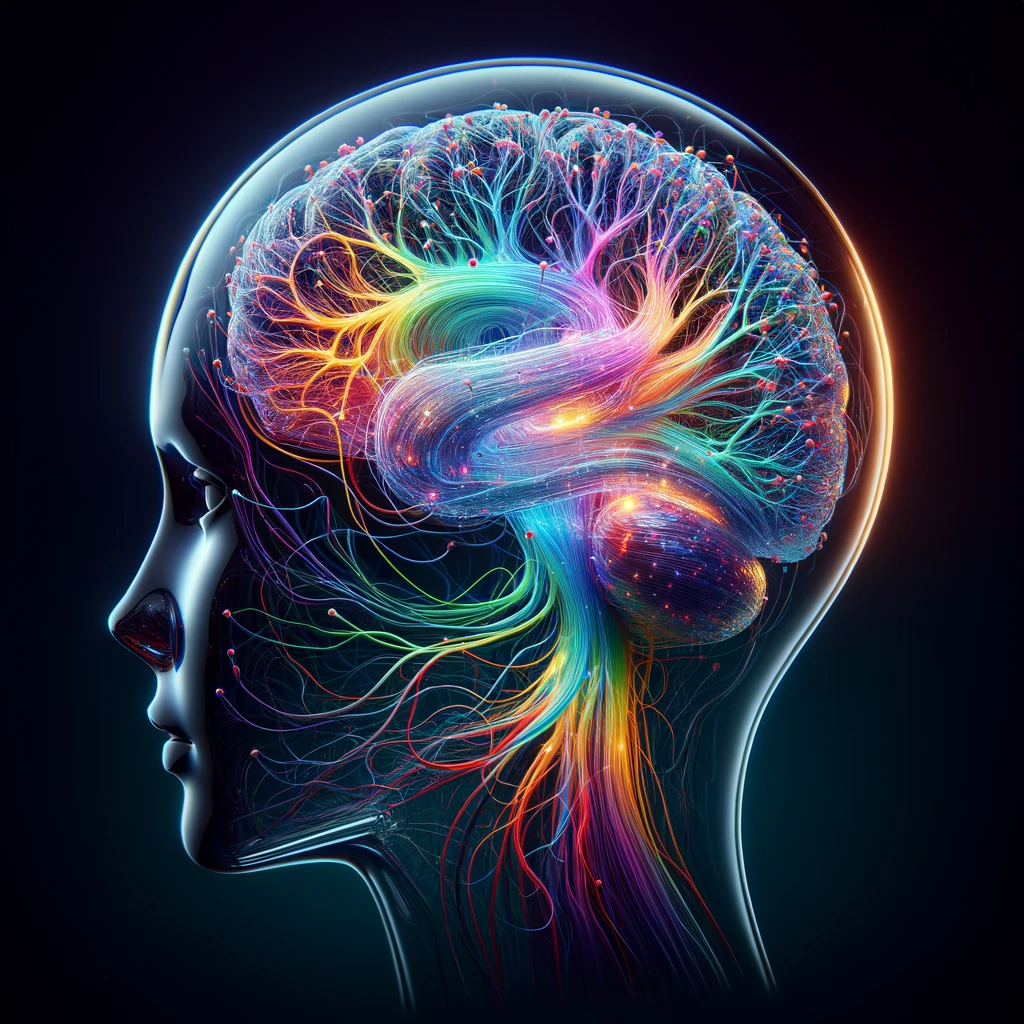
The Neuroscience of Alcohol Addiction: Endorphins
"Understanding alcohol addiction requires a deep dive into the brain's neurochemistry, especially the pivotal role of endorphins." - Dr David Sinclair PhD
Unravelling the Brain's Battle: The Neuroscience of Alcohol Addiction and Endorphins
Introduction:
In the journey to understand alcohol addiction, neuroscience has uncovered pivotal insights into how our brains respond to alcohol. The role of endorphins, our body's natural pleasure chemicals, is particularly significant. This comprehensive exploration delves into the intricate relationship between alcohol, addiction, and the brain's endorphin system. We invite you to embark on this enlightening journey with us at Rethink Drink.

The Brain's Reward System and Alcohol
Understanding Endorphins and Alcohol Interaction
The intricate dance between alcohol and the brain's reward system is a subject of great interest and importance in the field of neuroscience. Central to this interaction are endorphins, the body's natural pleasure chemicals. When a person consumes alcohol, it triggers an increase in the release of these neurotransmitters, leading to a temporary sense of euphoria. This initial reaction might seem harmless, even enjoyable, but it's the beginning of a complex process that can lead to dependence and addiction.
The endorphin system in the brain is designed to reward behaviours that are essential for survival, like eating and social interaction, by releasing these pleasure-inducing chemicals. However, alcohol hijacks this system, artificially stimulating the release of endorphins and creating a powerful association between alcohol consumption and pleasure. Over time, this leads to a change in the brain's chemistry, where the production and responsiveness to natural endorphins are altered. This adaptation can result in a decreased ability to feel pleasure from everyday activities, making alcohol the primary source of pleasure.
This alteration of the brain's reward system also plays a significant role in the development of alcohol dependence. As the body becomes accustomed to the high levels of endorphins released during drinking, it starts to require more alcohol to achieve the same effect, a phenomenon known as tolerance. When alcohol is not present, individuals may experience withdrawal symptoms, including anxiety, irritability, and intense cravings. These symptoms are a direct result of the brain's adjusted endorphin levels and its expectation of alcohol as a means to restore them.
The Sinclair Method (TSM): A Neuroscience Perspective
The Sinclair Method (TSM) offers a ground-breaking approach to tackling alcohol dependence by directly targeting the relationship between endorphins and alcohol. The method employs Naltrexone, a medication that blocks the endorphin receptors in the brain. This blockade prevents the person from experiencing the usual pleasure associated with drinking, gradually reducing their desire for alcohol.
The science behind The Sinclair Method (TSM) is rooted in the concept of pharmacological extinction, a process where the brain's learned behaviours (in this case, alcohol dependence) are weakened over time. By consistently taking Naltrexone before drinking, individuals using The Sinclair Method (TSM) break the association between alcohol consumption and the release of endorphins. This disassociation is key to reducing cravings and, ultimately, the consumption of alcohol.
Numerous studies have highlighted the efficacy of The Sinclair Method (TSM) in reducing alcohol dependence. Unlike traditional abstinence-based methods, The Sinclair Method (TSM) does not require the individual to stop drinking immediately. Instead, it allows for a gradual reduction in alcohol intake, making it a more manageable and less intimidating approach for many. This method also addresses the neurological aspect of addiction, providing a scientific and medically-based solution to a problem often misunderstood as solely a matter of willpower.
The Long-Term Impact of Alcohol on Brain Chemistry
Alterations in the Endorphin System
The long-term impact of alcohol on the brain's endorphin system is profound and far-reaching. Chronic alcohol use does not merely cause a temporary increase in endorphin levels; it leads to fundamental changes in the brain's chemistry. These alterations have significant implications for both the development of addiction and the challenge of recovery.
One of the most notable changes is the brain's reduced ability to produce and respond to natural endorphins. Over time, with consistent alcohol use, the brain adjusts to the high levels of endorphins by reducing its own production and the sensitivity of its endorphin receptors. This adaptation can lead to a reduced ability to experience pleasure from everyday activities, as the brain now relies on alcohol to stimulate endorphin release. It's a vicious cycle: the more a person drinks, the more reliant their brain becomes on alcohol for any sense of reward or pleasure.
These alterations also contribute to the physical symptoms of addiction and withdrawal. When a dependent individual stops drinking, their brain, accustomed to the artificial endorphin boost from alcohol, struggles to regulate its own chemistry. This imbalance leads to withdrawal symptoms and intense cravings, as the brain seeks to restore its endorphin levels. It's a clear indication of how deeply alcohol can rewire the brain's reward system, making recovery a challenging but essential process.
Rehabilitating the Brain: Hope through Neuroscience
Recovery from alcohol addiction is as much about retraining the brain as it is about detoxifying the body. Understanding the role of endorphins and the brain's reward system is crucial in developing effective treatments and supporting long-term recovery. This is where neuroscience provides hope.
Advancements in our understanding of neuroplasticity, the brain's ability to change and adapt, have opened new pathways in addiction treatment. Hence The Sinclair Method (TSM), Naltrexone and a tailored made reduction programme.
Conclusion
Understanding the neuroscience of alcohol addiction, particularly the role of endorphins, is crucial in developing effective treatments and supporting recovery. The insights provided by The Sinclair Method (TSM) demonstrate the power of a neuroscience-based approach. For more detailed information, we encourage you to explore our minicourse. If you have any questions, please visit our FAQ page or contact us. Stay informed and join the conversation on our blog.
